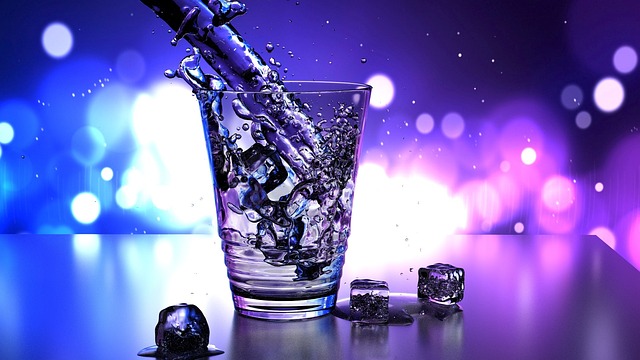Cold water therapy, or cold plunging, is a popular recovery method among athletes, reducing muscle soreness and inflammation by constricting blood vessels and removing metabolic waste. Recommended as 10-15 minute immersions in 50-60°F (10-15°C) water post-exercise, it can enhance performance, speed up recovery, and lower injury risk when practiced safely under professional guidance. Regular sessions, combined with stretching, foam rolling, and proper nutrition, offer synergistic benefits for athletes looking to boost their recovery routines.
Cold water therapy, or cold plunging, is gaining popularity among athletes looking to enhance recovery. This powerful technique involves submerging oneself in freezing or icy water for a short period, offering numerous benefits like reduced inflammation and muscle soreness. For beginners, incorporating cold plunges into your routine can seem daunting, but with the right preparation and safety measures, it becomes an accessible tool for optimal athletic performance. Discover practical tips to guide you through this process.
Understanding Cold Water Therapy: Benefits for Athletes
Cold water therapy, also known as cold plunging or cryotherapy, has gained popularity among athletes as a powerful recovery tool. This involves briefly exposing oneself to cold water, typically through an ice bath or cold shower, after intense exercise. The practice offers numerous advantages for athletic performance and recovery.
For athletes, cold water therapy can reduce muscle soreness and inflammation, two common issues post-workout. The shock of cold water causes blood vessels to constrict, which decreases swelling and pain in the affected muscles. This rapid cooling also aids in removing metabolic waste products from working muscles, speeding up recovery and potentially improving performance for subsequent training sessions. Many athletes swear by it as a natural way to enhance endurance, increase resilience, and promote overall athletic well-being.
Getting Started with Cold Plunges: Safety Precautions and Preparation
Cold plunges, or immersing yourself in cold water, have gained popularity as a recovery method among athletes looking to enhance their performance and reduce muscle soreness. While it may seem extreme, this practice offers numerous benefits when incorporated into a beginner’s recovery routine. Before diving in (pun intended!), it’s crucial to prioritize safety and preparation.
When starting with cold plunges, begin with short durations of around 10-15 seconds in water temperatures between 50-60°F (10-15°C). Gradually increase the duration by a few seconds each time you try it. Always ensure you’re doing this under supervision or guidance from a professional to prevent any accidents, especially if you have any underlying health conditions or concerns. It’s important to stay safe while reaping the potential benefits of cold water therapy for athletes.
Incorporating Cold Plunges into Your Recovery Routine
Incorporating cold plunges into your recovery routine can be a game-changer, especially for athletes looking to enhance their performance and speed up recovery times. Cold water therapy involves immersing yourself in cold water, typically between 50-60°F (10-15°C), for a short period after intense exercise or training sessions. This practice has gained popularity due to its potential anti-inflammatory effects and ability to reduce muscle soreness.
Cold plunges stimulate blood flow, helping to flush out metabolic waste products from working muscles and reducing inflammation. For athletes, this means faster recovery, improved performance in subsequent workouts, and potentially a reduced risk of injury. It’s recommended to start with shorter durations, around 10-15 minutes, and gradually increase the time spent in the cold water as your body adjusts. Always ensure proper safety measures, especially when using outdoor cold water sources, to prevent shock or hyperventilation.
Advanced Techniques and Tips for Optimal Results
For optimal results in your recovery routines, beginners should explore advanced techniques beyond simple cold plunges. Incorporate alternating ice and heat, known as contrast therapy, to stimulate blood flow and promote faster muscle repair. This can be achieved by spending a few minutes in freezing water, followed by a warm shower or hot tub session. Targeted cryotherapy, such as applying an ice pack to specific sore muscles, can also be highly effective for reducing inflammation and pain.
Remember that consistency is key. Aim for regular cold water therapy sessions, ideally after intense workouts, to reap the benefits for athletes’ performance and recovery. Gradually increase immersion times, starting with short periods, to build tolerance and avoid shock to the system. Additionally, consider incorporating other recovery methods like stretching, foam rolling, and proper nutrition alongside cold water therapy for synergistic effects and optimal athletic performance.
Cold water therapy, or cold plunging, can be a powerful tool for athletes looking to enhance their recovery routines. By understanding the benefits of this practice, taking appropriate safety precautions, and integrating it into your regimen, you can unlock its full potential. From initial immersion to advanced techniques, incorporating cold plunges offers a natural, effective way to aid muscle recovery, reduce inflammation, and improve overall athletic performance. So, whether you’re a seasoned pro or just starting, give cold water therapy for athletes a try and experience the revitalizing effects for yourself.
